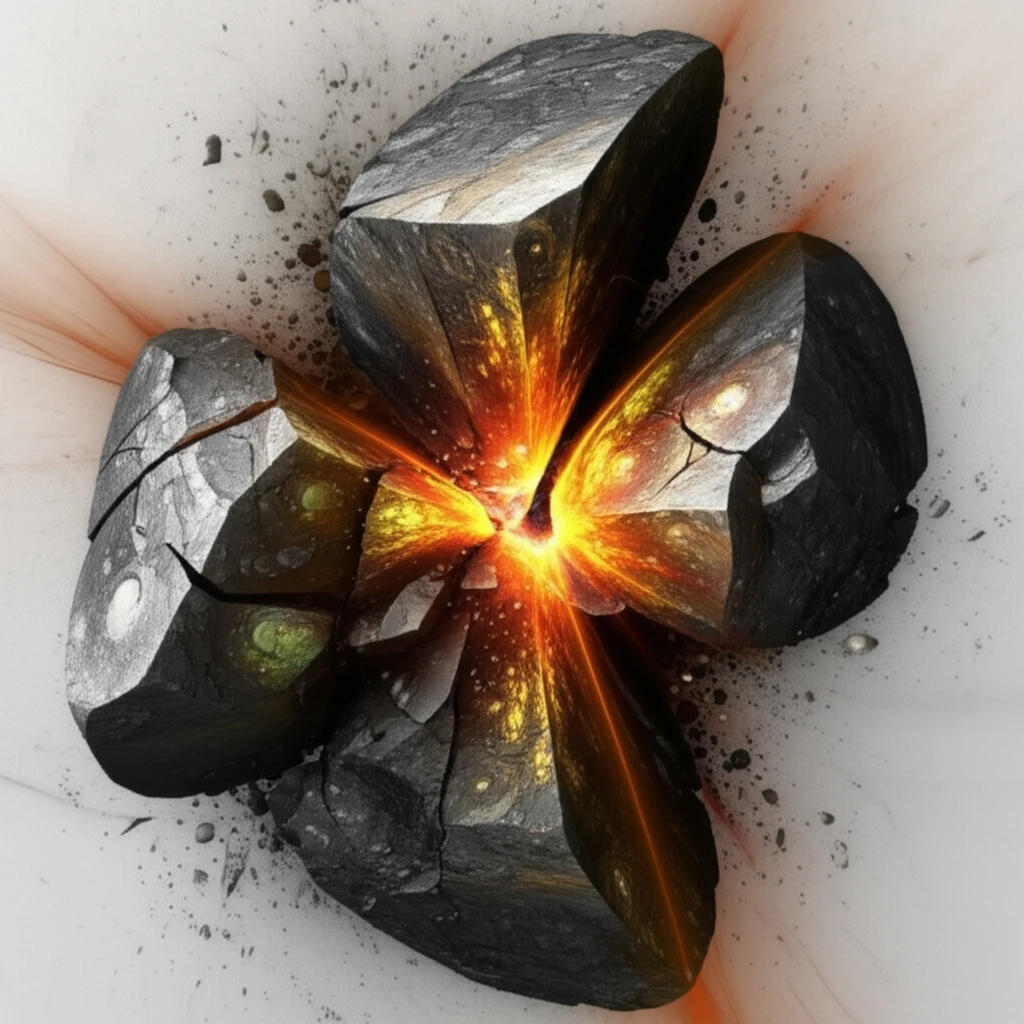
Cracking the Code: How Fractal Dimensions Can Optimize Rock Crushing
"Unlock efficiency and control in rock crushing with the power of fractal analysis. Discover how this innovative approach can revolutionize the mining and construction industries."
For decades, the concept of fractals has been quietly revolutionizing diverse fields, from computer graphics to materials science. Originally conceived as a way to describe irregular geometric shapes, fractal theory has proven particularly insightful in understanding the seemingly chaotic process of rock crushing. The key lies in the fact that rocks, when crushed, exhibit a fractal structure, meaning their broken pieces display self-similarity at different scales.
Traditionally, assessing the effectiveness of rock crushing has relied on indicators like particle size distribution and energy consumption. However, a more profound understanding can be achieved by delving into the fractal dimension – a measure that describes the complexity and space-filling properties of the crushed rock fragments. This approach offers a more holistic view of the crushing process, linking the energy input, the resulting particle sizes, and the fundamental characteristics of the rock itself.
Recent research has explored the application of fractal theory to optimize rock crushing processes. By understanding the fractal dimension of crushed rock, industries can potentially fine-tune their crushing methods to achieve desired particle sizes, minimize energy waste, and ultimately, improve overall efficiency. This article will explore the fascinating world of fractal dimensions and their practical implications for the mining and construction industries.
Fractal Dimension: A New Lens for Understanding Rock Crushing

The fractal dimension provides a unique way to characterize the crushed granularity of rocks. Unlike traditional measures, it reflects the statistical evolution of micro-gaps within the rock and offers insights into the energy dynamics of the crushing process. Experimental studies involving different types of rocks, such as niobium tantalum ore, granite, and cobblestones, have demonstrated the universality of fractal characteristics in rock crushing.
- Particle Size Distribution: Fractal dimension helps predict and control the distribution of particle sizes after crushing.
- Energy Consumption: Understanding the fractal dimension allows for optimizing energy usage during the crushing process.
- Crushing Effect Evaluation: Fractal dimension serves as an effective indicator for evaluating the overall effectiveness of crushing methods.
The Future of Rock Crushing: Embracing Fractal Analysis
The application of fractal theory to rock crushing represents a significant advancement in the field. By providing a more nuanced understanding of the crushing process, fractal analysis empowers industries to move beyond traditional methods and embrace a more data-driven approach.
While further research is ongoing, the existing findings highlight the potential for significant improvements in efficiency, cost reduction, and control over particle size distribution. As technology advances, we can expect to see even more sophisticated applications of fractal analysis in rock crushing and other related industries.
Ultimately, the key takeaway is that understanding the fundamental properties of materials at a micro-level can lead to significant breakthroughs in macro-level processes. By embracing innovation and exploring new approaches like fractal analysis, industries can unlock unprecedented levels of efficiency and sustainability.
